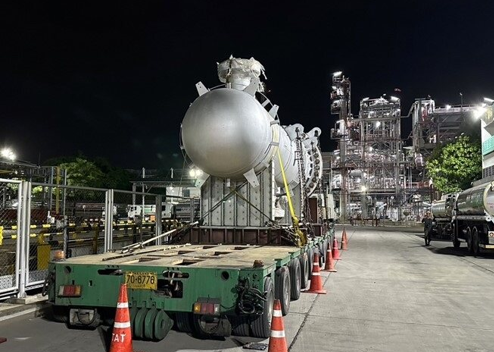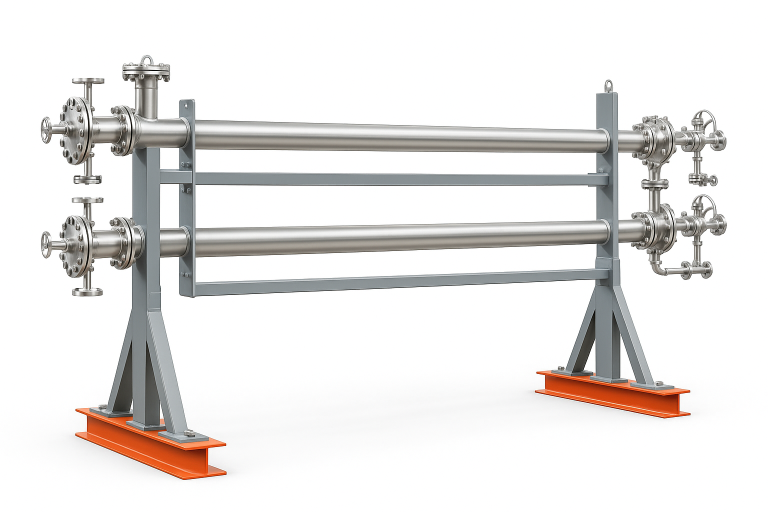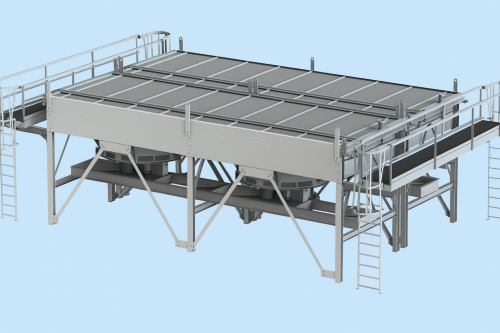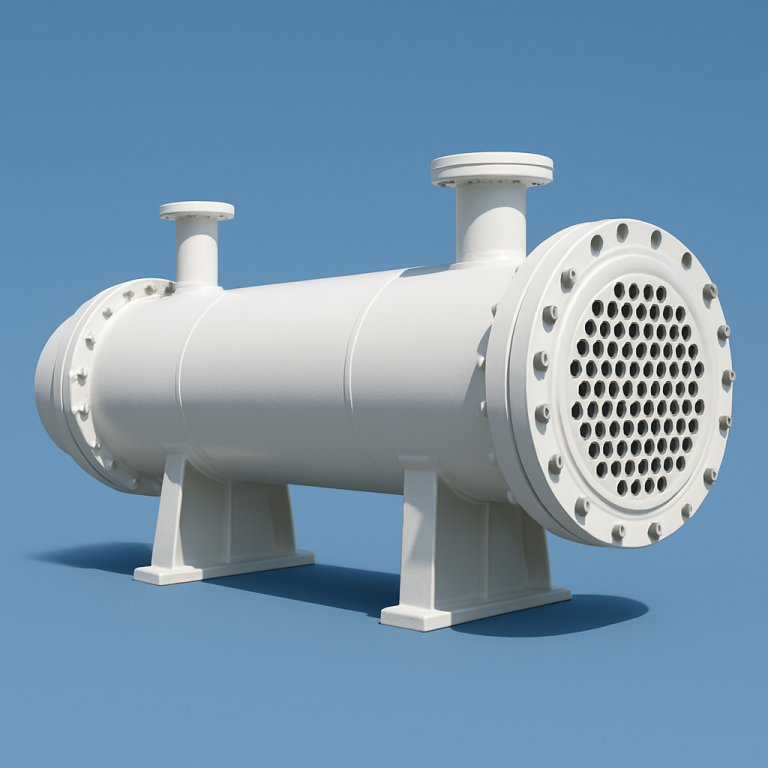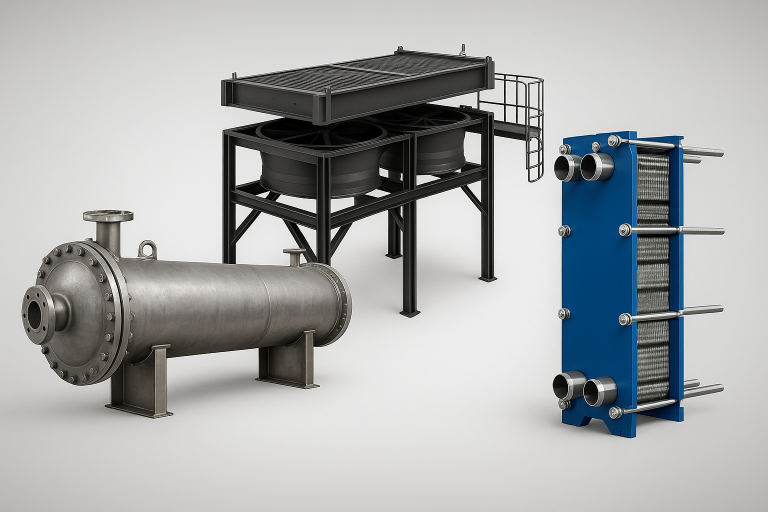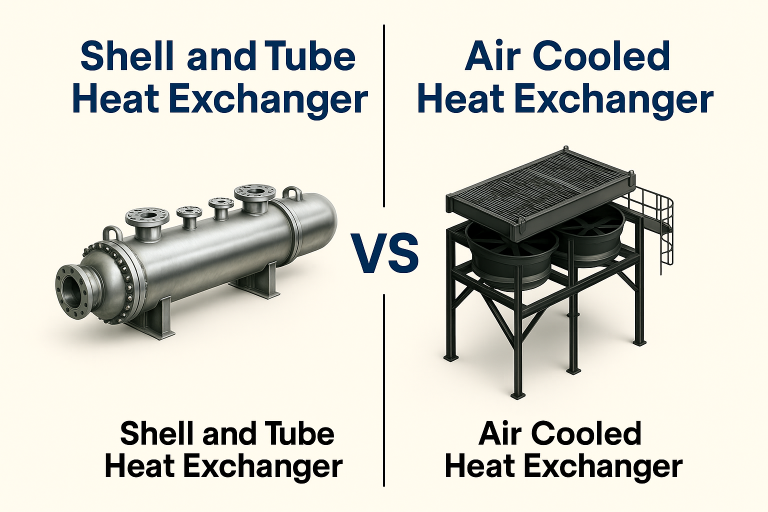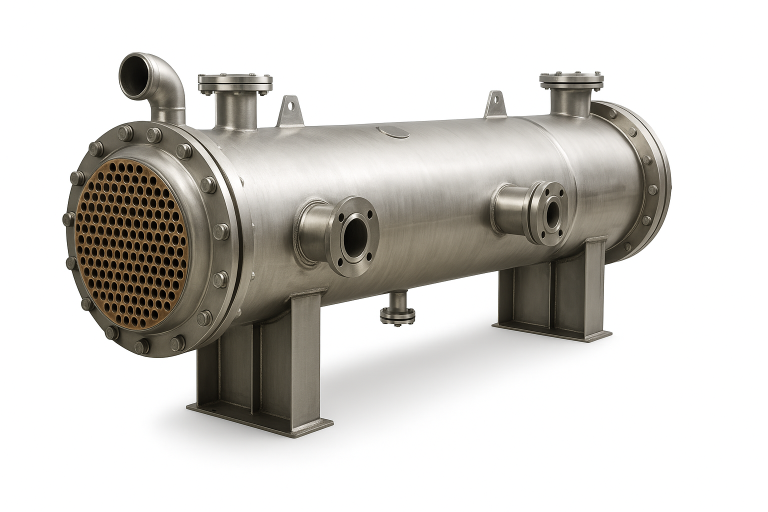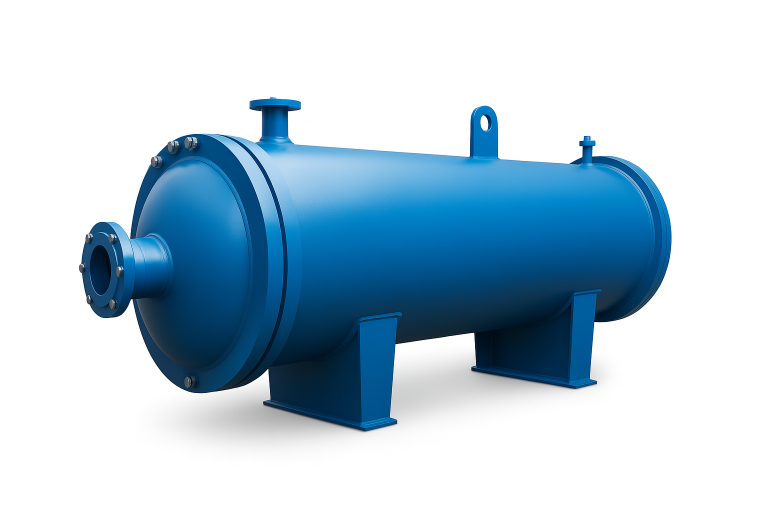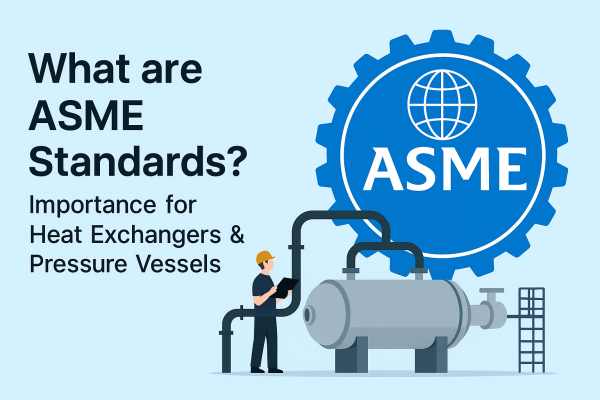A shell and tube heat exchanger
is a class of heat exchanger designs, highly favored in industrial applications for its efficient heat transfer capabilities and versatility. In this comprehensive guide, we will delve into the fundamental aspects, working principles, types, applications, and benefits of shell and tube heat exchangers.
What is Shell and Tube Heat Exchanger?
A shell and tube heat exchanger consists of a series of tubes, one set carrying the hot fluid and the other the cold fluid. Heat exchange occurs between these fluids through the tube walls (surface), facilitating the transfer of thermal energy. These heat exchangers are widely used due to their robust construction and ability to handle high-pressure and high-temperature fluids.
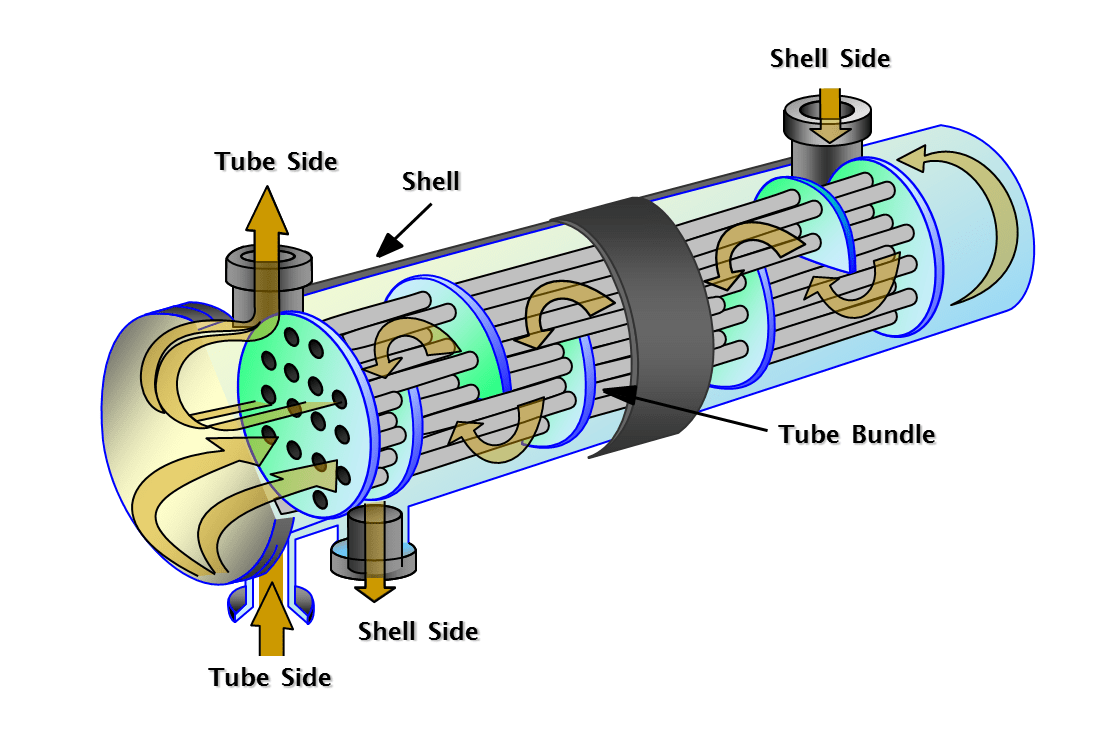
Working Principle of Shell and Tube Heat Exchangers
The basic working principle involves two fluids at different temperatures. One fluid flows through the tubes (the tube side), and the other flows outside the tubes but inside the shell (the shell side). The heat from the hotter fluid transfers to the cooler fluid without the two fluids mixing, ensuring efficient thermal exchange.
The efficiency of the heat exchange process depends on several factors including the temperature difference between the fluids, the flow arrangement, and the surface area of the tubes. To maximize heat transfer, the fluids can flow in either a parallel or counterflow arrangement, with counterflow generally providing better efficiency.
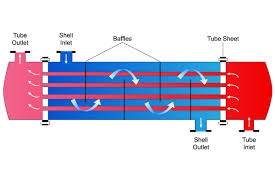
Key Components for Shell and Tube Heat Exchanger
- Shell: The outer vessel containing the tube bundle.
- Tube Bundle: Comprising tubes through which the fluid flows.
- Baffles: Directing the flow of fluid within the shell side to enhance heat transfer by creating turbulence.
- Tube Sheets: Holding the tubes in place and providing a seal between the tube and shell sides.
- End Caps: Sealing the ends of the shell.
These components work together to ensure efficient heat transfer while maintaining structural integrity under high-pressure and high-temperature conditions.

example for parts for shell and tube heat exchangers
Types of Shell and Tube Heat Exchangers
Based on Construction
1.Fixed Tube Sheet: The simplest design, ideal for clean services where minimal maintenance is required. This type is cost-effective but less flexible for applications requiring frequent cleaning.
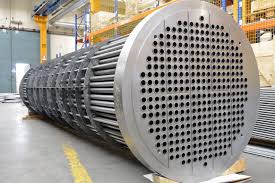
2. U-Tube: Allows for thermal expansion and contraction, suitable for high-temperature differences. The U-shaped tubes make it possible to accommodate thermal stresses.
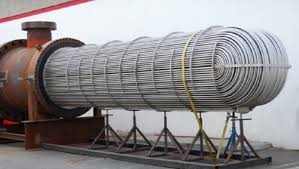
3. Floating Head: Facilitates cleaning and maintenance, optimal for services where tube bundle removal is necessary. This design allows for the easy replacement of individual tubes, making it highly maintainable.
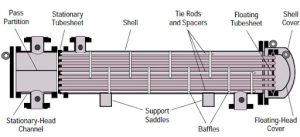
Based on Pass Arrangement
1.Single Pass: Fluid passes through the tubes in one direction. This design is simple and cost-effective but might not offer the highest heat transfer efficiency.
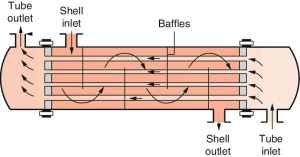
2. Multi-Pass: Fluid passes through the tubes multiple times, increasing heat transfer efficiency. The increased number of passes allows for better heat exchange but requires more complex designs and control systems.
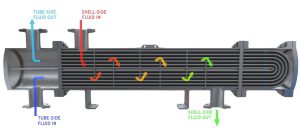
Applications of Shell and Tube Heat Exchangers
- Oil Refining: Used for cooling and heating of hydrocarbons. Shell and tube heat exchangers are crucial in processes like distillation, where precise temperature control is essential.
- Chemical Processing: Facilitates temperature regulation in chemical reactions, ensuring product quality and process safety.
- Power Generation: Integral in condensers and boiler feedwater heaters, contributing to the efficiency of power plants.
- HVAC: Used in heating, ventilation, and air conditioning systems to control environmental conditions in buildings and industrial plants.
- Marine Applications: Provides cooling for engines and machinery onboard ships, ensuring reliable operation in harsh marine environments.
Advantages of Shell and Tube Heat Exchangers
- High Efficiency: Capable of handling large heat loads, making them suitable for industrial applications.
- Versatility: Suitable for a wide range of temperatures and pressures, accommodating various industrial processes.
- Scalability: Easily adaptable to different sizes and capacities, from small installations to large industrial plants.
- Durability: Robust construction ensures long-term reliability and resistance to harsh operating conditions.
- Maintenance: Designs like the floating head type allow easy maintenance and cleaning, reducing downtime.
Design Considerations
- Material Selection: Critical for compatibility with fluids and operating conditions. Common materials include stainless steel, carbon steel, and copper alloys, chosen based on factors like corrosion resistance, thermal conductivity, and mechanical strength.
- Heat Transfer Area: Must be sufficient to achieve the desired thermal performance. The more surface area available for heat transfer, the more efficient the exchanger.
- Pressure Drop: Should be minimized to enhance efficiency. Excessive pressure drop can lead to increased energy consumption and operational costs.
- Flow Arrangement: Counterflow arrangement often provides better heat transfer than parallel flow. The relative direction of the fluid flows affects the thermal gradient and efficiency.
- Thermal Expansion: Designs must accommodate thermal expansion to prevent damage. Materials and construction methods should be chosen to handle the thermal stresses encountered during operation.
Maintenance and Troubleshooting
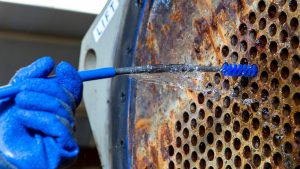
Regular maintenance is essential to ensure optimal performance and longevity of shell and tube heat exchangers. Common maintenance tasks include:
- Cleaning: Regular cleaning of tubes to prevent fouling and scaling. Cleaning methods can include chemical cleaning, mechanical cleaning, and high-pressure water jets.
- Inspection: Routine checks for leaks, corrosion, and mechanical wear. Non-destructive testing methods like ultrasonic testing and radiographic inspection can help detect issues without dismantling the equipment.
- Tube Replacement: Replacing damaged or corroded tubes to maintain efficiency. Keeping spare tubes and gaskets on hand can reduce downtime during maintenance.
Common Issues and Solutions
- Fouling: Accumulation of deposits reduces heat transfer efficiency. Regular cleaning and proper filtration can mitigate fouling. Implementing a proper water treatment program can also help reduce fouling.
- Leakage: Caused by corrosion or mechanical damage. Regular inspections and using corrosion-resistant materials can prevent leaks. In case of leakage, identifying the source and replacing or repairing the affected components is crucial.
- Vibration: Resulting from flow-induced vibrations. Proper design and installation of baffles can minimize this issue. Ensuring adequate support and securing of tubes can also help reduce vibrations.
Innovations and Future Trends
With the continuous advancement in materials and manufacturing technologies, shell and tube heat exchangers are evolving to meet the increasing demands of modern industries. Some notable trends include:
- Advanced Materials: Development of corrosion-resistant and high-strength materials to enhance durability and performance. Materials like duplex stainless steels and titanium alloys are increasingly used.
- Compact Designs: Innovations aimed at reducing the size while maintaining high efficiency. Compact heat exchangers are suitable for space-constrained environments.
- Enhanced Heat Transfer: Incorporation of new technologies to boost heat transfer rates, such as finned tubes and advanced baffle designs. Improved surface treatments and coatings can also enhance heat transfer.
- Smart Monitoring: Integration of sensors and IoT for real-time monitoring and predictive maintenance. Smart monitoring systems can provide insights into the operational health of the heat exchanger, allowing for proactive maintenance and reducing unplanned downtime.
Selecting the Right Shell and Tube Heat Exchanger
Choosing the appropriate shell and tube heat exchanger depends on several factors:
- Application Requirements: Understand the specific thermal and pressure requirements of your application. The operating conditions will dictate the choice of materials and design features.
- Fluid Properties: Consider the chemical compatibility, viscosity, and temperature of the fluids. The choice of materials and design will be influenced by the nature of the fluids being processed.
- Space Constraints: Ensure the selected exchanger fits within the available space. Compact designs or modular configurations may be required for space-limited installations.
- Budget: Balance between upfront costs and long-term operational efficiency. Investing in a higher-quality heat exchanger can lead to lower maintenance costs and improved performance over the lifespan of the equipment.
- Maintenance Needs: Evaluate the ease of maintenance based on the operational environment. Consider designs that facilitate easy cleaning and tube replacement if frequent maintenance is anticipated.
Conclusion
Shell and tube heat exchangers are indispensable components in various industrial processes, offering unmatched efficiency, versatility, and durability. By understanding their working principles, types, applications, and maintenance needs, you can make informed decisions to optimize your thermal management systems.
Investing in a high-quality shell and tube heat exchanger ensures reliable performance, long-term cost savings, and adaptability to evolving industrial demands. Stay ahead of the curve by embracing the latest innovations and best practices in heat exchanger technology.
For more information on shell and tube heat exchangers, or to find the right solution for your needs, contact our team of experts today.
Apart from shell and tube heat exchangers, there are several other types of heat exchangers typically used.
- Air Cooled Heat Exchangers
- Double Pipe Heat Exchangers
- Hair-Pin Heat Exchangers
- Plate Heat Exchangers

